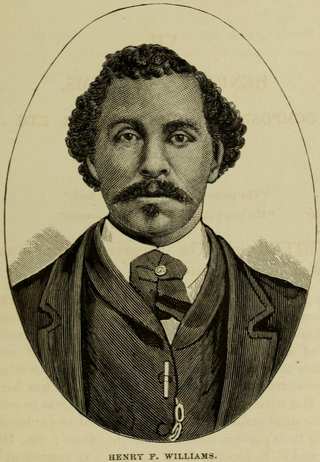Related Research Articles
Circus music is any sort of music that is played to accompany a circus, and also music written that emulates its general style. Popular music would also often get arranged for the circus band, as well as waltzes, foxtrots and other dances.

Oliver Ditson was an American businessman and founder of Oliver Ditson and Company, one of the major music publishing houses of the late 19th century.

Emma Marcy Raymond was an American musician, composer, and author of operetta, songs and piano music. She was one of very few women in her day who had composed the entire music of an opera and lived to see it produced.

Hans Kronold was a Polish-born Jewish cellist, composer, educator, and a member of symphony orchestras of New York and Boston. He was the first cellist to have his work recorded on audio, which he did for recording pioneer Gianni Bettini phonograph cylinders in the 1890s.

Henry F. Williams was a musician and composer in Boston, Massachusetts, in the late 19th century. He was one of two black musicians to play in the orchestra at the 1872 National Peace Jubilee. His arrangements received widespread popularity. Later in his life he was primarily a music teacher. Williams has been called the second best known black composer of his time after Frank Johnson, with whom he worked.
The Alice M. Ditson Fund, founded in 1940, supports contemporary American music. Significant ongoing awards include the Ditson Conductor's Award.

Florence Atherton Spalding was an American music teacher and a composer from Boston, Massachusetts.

William A. Penno (1843–1929), known by his stage name William A. Huntley, was a composer, music teacher, and vocal and instrumental performer in minstrel and vaudeville traditions. Playing his 5-string banjo before crowds that came to number in the low thousands, he sang in a high tenor and played his banjo bare fingered, picking the strings in a style today named "classic banjo." His published compositions include banjo instrumentals and parlor music. Huntley spent his working life performing and teaching in the off season. He performed throughout the United States and toured Europe as a part of several different minstrel groups. A highlight of his performing career was to play before the Prince and Princess of Wales, about 1880 at Her Majesty's Theatre in London. He moved away from minstrel shows by the 1880s, and "took pride" that he could perform without blackface stage makeup. He focused on building respectability for the banjo, through teaching, composition, and performance recitals. He was featured in the S. S. Stewart Company's catalog and began to play the company's banjeaurine. In 1888 he performed before a crowd of 2,000 people in his hometown, Providence, Rhode Island.
J. Lillian Vandevere was an American author, composer, and music educator. She is best remembered today for her compositions for rhythm band and toy orchestra, and her work on the California State Series textbooks for music education.

Cornelia Townsend was an American song composer who published most of her music under the name Kate Vanderpoel.
Mildred Lund Tyson was an American choral director, composer, organist, and soprano.
Florence Turner-Maley was an American composer, singer, and teacher.
Margaret B. Hoberg Turrell was an American composer, organist, and philanthropist who _ with her husband Herbert Turrell _ founded the Turrell Fund in 1935 to aid at-risk children. She published her music under the name Margaret Hoberg.
Léonie Antoinette Tonel was a French pianist and composer.

Anice Potter Terhune was an American author, composer, music educator, and church organist, who composed over 100 children's songs. She was known as "Annie," and sometimes published under the pseudonym Morris Stockton.

Bertha Johanne Feiring Maass Tapper was a Norwegian composer, pianist, and teacher, best known for editing the piano works of Edvard Grieg for publication in America. She published under the name Bertha Feiring Tapper.
Fannie Morris Spencer was an American composer and organist who wrote a collection of 32 hymns and was a founding member of the American Guild of Organists.
Hazel Ann Ghazarian Skaggs was an American author, composer, and music educator who specialized in piano pedagogy.
Lillian Alison Tait Sheldon was an American composer and organist who composed many hymns.
Sophie Seipt, also seen as Sophie Seibt (1812–1889), was a German composer and arranger who wrote several pieces for cello and piano.
References
- 1 2 "ccm :: Simmons, Kate Simmons". composers-classical-music.com. Retrieved 2022-07-23.
- ↑ Stern, Susan (1978). Women composers : a handbook. Metuchen, N.J.: Scarecrow Press. ISBN 0-8108-1138-3. OCLC 3844725.
- ↑ Cohen, Aaron I. (1987). International Encyclopedia of Women Composers. Books & Music (USA). ISBN 978-0-9617485-2-4.
- ↑ Music & Drama. Music and Drama Publishing Company. 1882.
- 1 2 3 4 5 6 7 8 9 10 11 "ccm :: Simmons, Kate Simmons". composers-classical-music.com. Retrieved 2022-04-04.
- ↑ Simmons, Kate (14 February 1934). "Times Union". Newspapers.com. p. 8. Retrieved 2022-04-04.
- 1 2 3 Hutchinson, Asa Burnham (1859). Hannah's at the Window Binding Shoes. Oliver Ditson & Company.
- ↑ Hampton's Magazine. Columbian-Sterling Publishing Company. 1910.
- ↑ Laurence, Anya (1978). Women of notes : 1,000 women composers born before 1900. R. Rosen Press. OCLC 770809290.